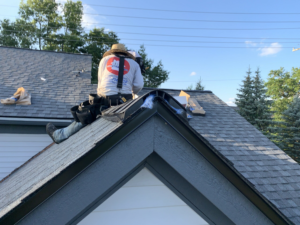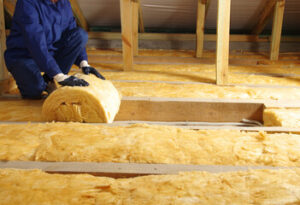Updated bathrooms leave a lasting impression on prospective buyers and boost home value. Clever storage solutions like pull-out drawers help you organize toiletries and minimize clutter.

A local bathroom remodeler translates architectural plans into reality, providing design and product options that align with your lifestyle needs. They also have in-depth knowledge of current trends and codes. Contact Bathroom Remodeling Lexington KY for professional help.
A well-executed bathroom remodel can breathe new life into a tired space while enhancing functionality and increasing resale value. To accomplish these goals, it is important to consider aesthetics as well as the layout and design of the room. Depending on your preferences, this can include everything from color schemes and materials to the placement of fixtures and accessories.
To create a more cohesive look, opt for finishes and materials that complement each other. For example, choosing a white vanity with dark wood accents will create a sleek contrast that is both modern and traditional. Additionally, incorporating natural elements like plants and a window can bring in visual interest.
Another way to add style is through storage options. Optimizing storage space by adding cabinets, shelves, or other innovative solutions is a great way to keep your bathroom clean and organized. If possible, utilizing vertical space by installing shelving or cabinets that go all the way up to the ceiling will also help make the room feel larger.
Lighting is also a key aspect of creating the right ambiance. Incorporating task, ambient, and decorative lighting will highlight your favorite features and create a relaxing environment. If you plan on installing a new light fixture, it is a good idea to consult with an electrician to ensure that your electrical system can accommodate the new fixture.
Flooring is another area where you can make a big impact on the look and feel of your bathroom. Opting for tile or luxury vinyl that is both waterproof and stylish can create a beautiful, high-end finish. In addition, heated floors are a luxurious touch that will add comfort during colder months.
Functionality
A well-executed bathroom remodel can breathe new life into an essential space that enhances aesthetics, improves functionality, and increases your home’s value. When it comes to your renovation, there are many factors to consider including layout, style, storage, lighting, and accessories. It’s important to work with a professional who understands your needs and will create a space that reflects your personal style.
A bathroom remodeling project can include a wide range of upgrades and additions, from a simple showerhead upgrade to a complete overhaul of your floor plan. Whether you want to change the layout, address structural issues, or integrate modern upgrades, it’s crucial to choose high-quality materials that will last.
Choosing a high-quality, durable bathroom can help ensure your renovation is long-lasting and aesthetically appealing. You can also add a personal touch with unique accessories and decorations, such as towels, rugs, and artwork. It’s a great way to transform your bathroom into a retreat where you can unwind and relax. If you’re ready to get started on your bathroom remodel, contact a trusted local contractor today. Just answer a few simple questions about your project and get matched with top-rated pros near you. It’s fast, easy, and free!
Safety
Bathroom remodeling is not just about aesthetics; it also enhances functionality and safety. Whether you need a new shower or tub, vanity, and lighting or simply want to install a double sink and more storage space, these upgrades can significantly improve your home’s efficiency and comfort. They can also help you save money on energy bills and reduce water and energy consumption.
One of the most important considerations during a bathroom remodel is to ensure that all electrical installations comply with current codes and regulations. A licensed electrician should handle all the electrical work, minimizing the risk of accidents and hazards. Moreover, the use of ground-fault circuit interrupters (GFCIs) near water sources is vital to protect against electrocution. Similarly, the installation of non-slip flooring and properly installed grab bars can greatly reduce the risk of falls and injuries in bathrooms.
A safe bathroom environment is particularly crucial for seniors and individuals with mobility issues. Senior Bathroom Remodeling services offer a comprehensive solution for this need, including non-slip flooring, walk-in showers, and high toilet seats that allow individuals to navigate the bathroom safely and comfortably.
During a luxury bathroom remodel, it is also possible to incorporate smart technology that can add convenience and boost comfort. For instance, a smart mirror with built-in lighting and defogging features can be an excellent addition to any luxury bathroom design. Additionally, you can install automated faucets and showerheads to increase efficiency and minimize energy usage.
Finally, choosing durable materials and fixtures can prevent frequent repairs and maintenance costs down the line. This is why it’s important to seek out a bathroom renovation company that can provide quality workmanship and a wide selection of premium products.
Ultimately, the goal of any remodel is to turn your old and outdated bathroom into a space that fits your personal style and meets all of your needs. A professional contractor can help you achieve this by providing expert guidance on layout, style, storage, and flooring and helping you select the right accessories to complement your new look. They can also assist you with the permit process and any other legal requirements, ensuring that your project stays on schedule and within budget.
Resale Value
A well-executed bathroom renovation elevates your home’s worth. Even if you aren’t planning on selling anytime soon, a custom bathroom makes your home more appealing to buyers when the time comes to move.
Remodeling your bathroom can be costly, but the benefits outweigh the costs. Professional remodeling companies will be able to design your bathroom without exceeding your budget, and they can work with you to create a space that is both functional and beautiful. They will also ensure that the job is done correctly so that you don’t have to worry about repairs in the future.
Choosing high-quality materials for your remodel will add durability and a timeless style. In addition, you can make your bathroom more energy-efficient by installing eco-friendly fixtures and appliances. These include water-saving toilets, LED lighting, and heated floors. This will help to lower your energy bills and reduce your carbon footprint.
While aesthetics are important, functionality should be a top priority during a Lexington bathroom remodel. A remodeled bathroom should be easy to use and comfortable for residents of all ages. Consider adding double vanities, larger showers, and more storage to enhance the room’s functionality. You can also incorporate luxury features such as a spa-like atmosphere and steam showers.
If you’re considering a full bathroom remodel, consult a contractor with a proven track record of successful renovations. Look for positive reviews and examples of previous work, as well as clear communication throughout the project. The contractor should be licensed and insured, so you can trust that they will complete the job in a safe and timely manner.
Bathroom renovations are one of the most cost-effective ways to improve a home’s value and increase its comfort. However, it’s essential to understand your long-term goals before beginning a renovation project. This will help you make wise decisions that will maximize resale value and increase the appeal of your home.
Whether you’re looking to turn an unused basement into a game room or create a spacious guest suite, basement finishing can help you make the most of your home. By working with a reputable company, you can transform your basement into a space that suits your family’s needs and lifestyle.








